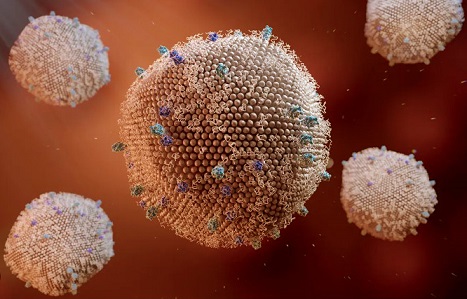Nikhil Prasad Fact checked by:Thailand Medical News Team Nov 21, 2024 1 year, 3 days, 14 hours, 16 minutes ago
Medical News: Researchers from Université Paris-Saclay, Université Paris Cité, and the Institut Pasteur in France have unveiled a fascinating mechanism by which respiratory syncytial virus (RSV), a major cause of severe respiratory infections in children, evades our body’s natural defenses. Their study highlights how RSV undermines the antiviral protein BST2, commonly known as Tetherin. This discovery not only sheds light on the virus's cunning strategies but also paves the way for potential new treatments. This
Medical News report explores the study in detail.
 How RSV Dodges Our Body's Defense
How RSV Dodges Our Body's Defense
BST2 is a protein that plays a key role in the immune response by restricting the spread of viruses like HIV and Ebola. This study marks the first time scientists have identified BST2 as a restriction factor for RSV. The researchers demonstrated that BST2 impedes RSV by tethering the virus to the surface of infected cells, preventing its release and limiting its spread. However, RSV fights back by degrading BST2, a process heavily dependent on a viral protein called NS1.
How BST2 Battles RSV
The study employed various experimental approaches to observe how BST2 interacts with RSV. When BST2 levels were reduced using specialized RNA techniques, the researchers observed a significant increase in RSV production, indicating that BST2 naturally restricts the virus. Conversely, overexpressing BST2 led to decreased viral multiplication.
Through advanced imaging, the team confirmed that BST2 binds to RSV particles on the surface of infected cells, effectively tethering them and hindering their ability to infect new cells. These findings establish BST2 as a key player in controlling RSV infections.
RSV’s Counterattack: Targeting BST2
RSV, however, has evolved a sophisticated countermeasure. The researchers found that the virus decreases BST2 levels on the surface of infected cells, primarily through protein degradation. The NS1 protein was identified as the mastermind behind this process. When the researchers studied a version of RSV lacking NS1, they found it unable to degrade BST2 effectively. This weakened the virus’s ability to multiply, making it more susceptible to BST2’s antiviral effects.
Interestingly, NS1 achieves this by interacting with BST2 and marking it for destruction through ubiquitination, a process that tags proteins for degradation. This ability of NS1 to neutralize BST2’s antiviral activity highlights the protein’s crucial role in RSV’s survival strategy.
Insights from Advanced Cellular Models
To validate their findings, the team used specialized airway epithelial cells that closely mimic RSV’s natural targets. They observed similar patterns: RSV triggered the degradation of BST2 in infected cells while sparing nearby uninfected cells. This selective targeting ensures the virus can continue to spread while evading the immune system.
The study also
ruled out other viral proteins like G and NS2 as primary agents in BST2 degradation, firmly establishing NS1 as the key player. However, the researchers suggest that NS1 might not act alone and could require assistance from other viral components for complete efficiency.
Potential for New Therapeutics
Understanding how RSV overcomes BST2’s defenses opens new doors for therapeutic interventions. Targeting the NS1 protein or its interactions with BST2 could offer a novel strategy for controlling RSV infections. Such an approach could restore BST2’s ability to restrict the virus, potentially reducing the severity and spread of the infection.
Conclusion
This groundbreaking research reveals the intricate battle between RSV and the immune system. By identifying BST2 as a restriction factor and uncovering RSV’s counter-defense mechanisms, the study offers valuable insights into the virus’s biology. Targeting these interactions could revolutionize RSV treatment strategies, providing hope for millions affected by this pervasive virus.
The study findings were published in the peer-reviewed journal: PLOS Pathogens.
https://journals.plos.org/plospathogens/article?id=10.1371/journal.ppat.1012687
For the latest RSV News, keep on logging to Thailand
Medical News.
Read Also:
https://www.thailandmedical.news/news/probenecid-found-to-inhibit-respiratory-syncytial-virus-replication
https://www.thailandmedical.news/news/respiratory-syncytial-virus-infections-in-infants-causes-a-variety-of-long-term-health-issues-later-in-life
https://www.thailandmedical.news/news/early-childhood-rsv-infection-leads-to-lifelong-immune-changes-in-the-gut-and-lungs
